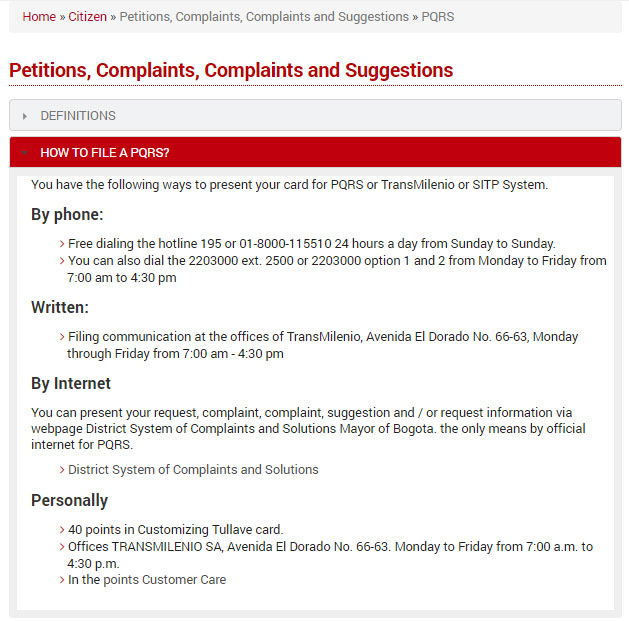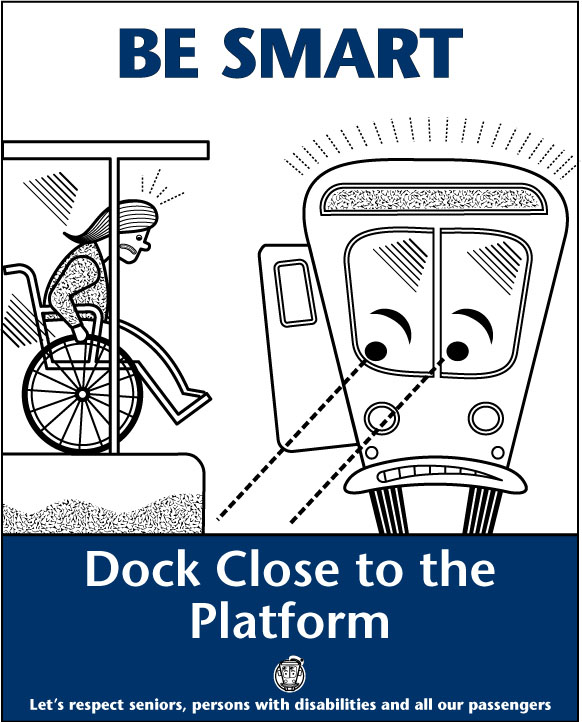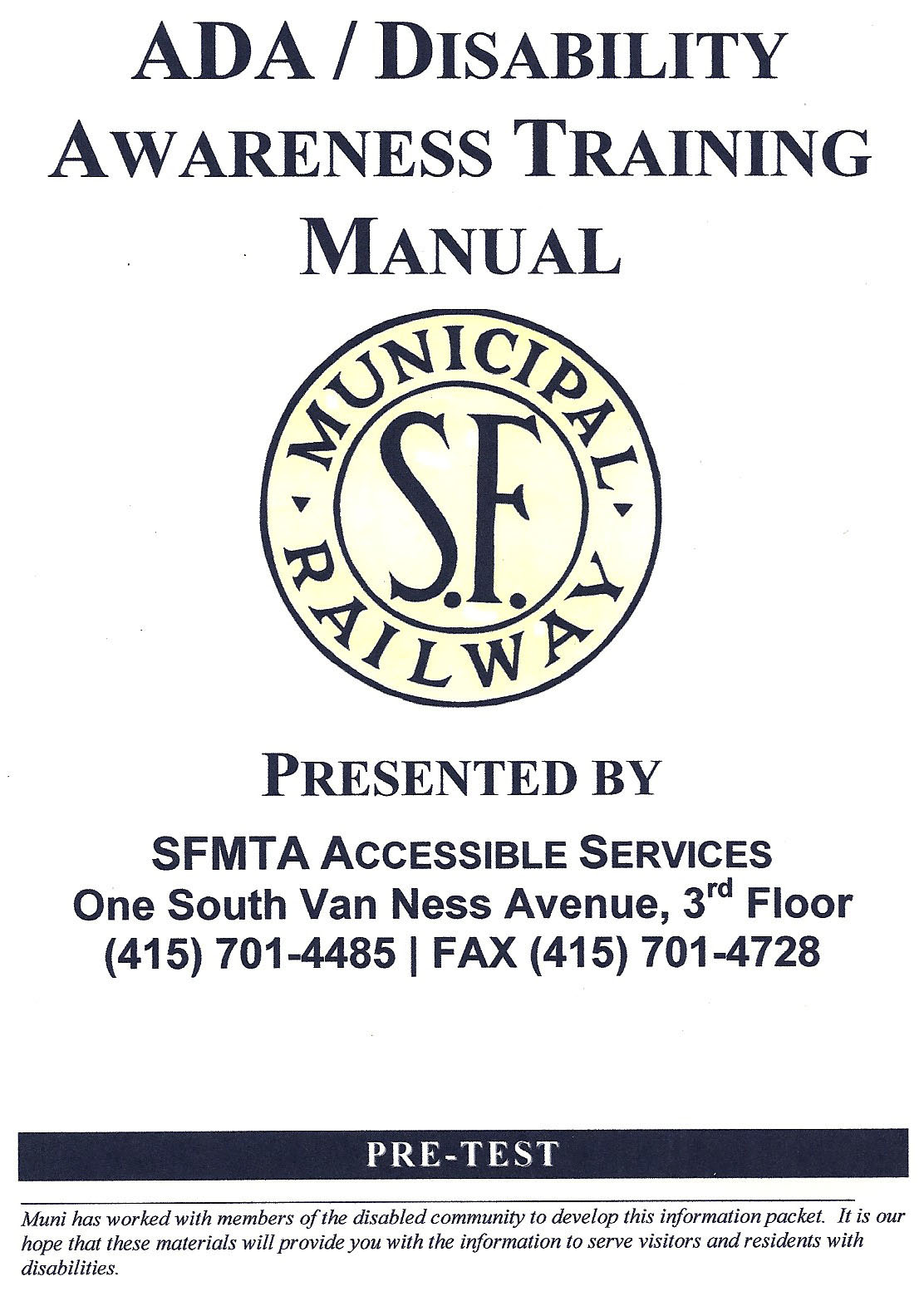30.7Driver and Staff Training
The one thing that unites all human beings, regardless of age, gender, religion, economic status, or ethnic background, is that, deep down inside, we all believe that we are above-average drivers.Dave Barry, author and columnist, 1947–
Accessible design must be supplemented by accessible operation in order to enhance universal access to the system. Drivers and public transport staff need to be aware of any laws and regulations concerning customers with special needs, and should be trained to appropriate competency, depending on their varying tasks, concerning the main categories of physical, sensory, and cognitive disabilities, including hidden disabilities. They should understand the appropriate vocabulary to use concerning customers with disabilities. Staff in contact with the public should learn basic skills for communicating with wheelchair users, customers who are deaf or hard-of-hearing, blind customers or those with low vision, and cognitively impaired customers.
30.7.1Trunk-Line Driver Training
Trunk-line drivers need training:
- To be alert to the needs of customers who are boarding or alighting;
- To pay special attention to ensure that wheelchair users, blind persons, and others with special needs are safely on board and properly secured, seated, or braced prior to moving the vehicle;
- To avoid sudden starts and stops;
- To slow down before going around curves;
- To drive courteously.
A regular monitoring (by uniformed supervisors or by undercover officers) and evaluation process helps to ensure continued accessibility. There should be a system for anonymous customer compliments and complaints (see Figure 30.68).

30.7.1.1Vehicle Docking at Stations

Trunk-line drivers require special training to dock their vehicles within a prescribed distance from the station platform. Periodic retraining is beneficial.
30.7.2Non-Trunk-Line Driver Training
Drivers on non-trunk-line routes should receive the same training as trunk-line drivers and station personnel. Because these drivers have even more contact with their customers, their training should also include:
- Operating lifts, ramps, and wheelchair securements;
- Pulling up to stations so that the first step of the vehicle entrance can be easily accessed by customers;
- Monitoring movements by wheelchair users to see if help is needed in securing customers;
- Calling out key stops (and requested stops) to assist blind persons and other customers not familiar with the system. Stops should be announced in time for customers to prepare to alight.

30.7.3Staff Training

Station attendants, fare personnel, and security personnel have special responsibilities in a BRT system and should be cross-trained concerning their treatment of customers with disabilities. Orientation to the needs of disabled customers should be part of such training. Ideally, such training would include boarding a vehicle in a wheelchair and navigating a station with a blindfold. Top management should set an example for others by also participating in such training.
Station personnel should be trained to:
- Avoid the extremes of “protecting” or “ignoring” disabled persons;
- Ask if help is needed before offering assistance;
- Be alert for wheelchair users and older persons who may have difficulty crossing the station-to-vehicle gap.
Just as it is beneficial to employ staff with a wide range of language skills, having personnel who know sign language in terminals and at major transfer points would be a boon to those deaf customers who use sign language.
30.7.4Emergencies
Transport providers need emergency plans in place to deal with earthquakes, floods, storms, fires, and other emergencies. The evacuation of customers, including persons with disabilities, from a vehicle in an emergency, or by a vehicle from a disaster area, should be a part of such planning.